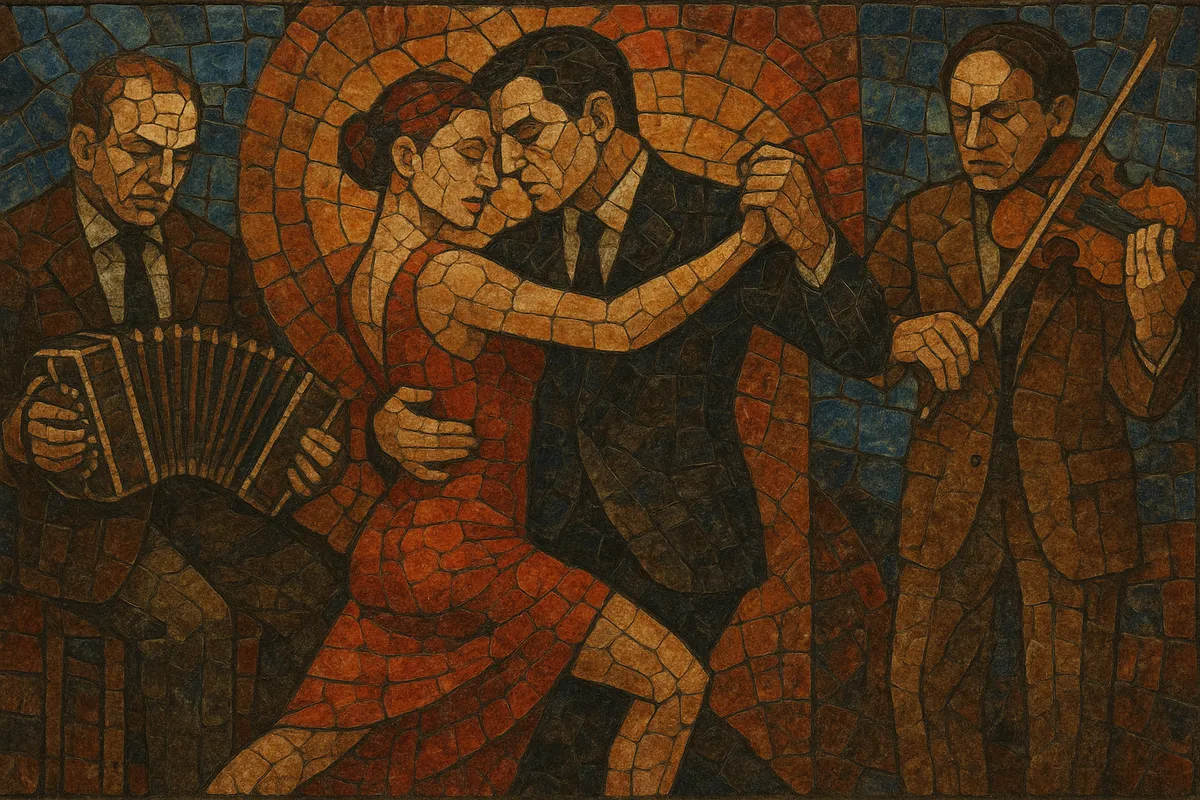Tango is a music and dance genre that emerged in the Río de la Plata region at the turn of the 20th century, characterized by its dramatic phrasing, bittersweet harmonies, and close-embrace dance. The music typically features an orquesta típica with bandoneóns, violins, piano, and double bass, playing in 2/4 or 4/4 time with a distinctive syncopated pulse derived from the habanera and Afro-Rioplatense rhythms.
Its sound blends European salon dances (waltz, polka, mazurka), rural gaucho song (payada, milonga), and Afro-Uruguayan/Argentine candombe. Melodies often lean minor, with chromatic inner lines, lush diminished chords, and expressive rubato. Vocal tangos frequently use lunfardo (Buenos Aires slang) to tell stories of love, loss, and urban life.
Tango took shape in the port cities of Buenos Aires and Montevideo in the late 1800s, where European immigrants, Afro-descendant communities, and rural migrants converged. Its rhythmic DNA draws from the Cuban habanera and the Afro-Rioplatense candombe, while its melodic-harmonic language absorbed elements of European salon dances (waltz, polka, mazurka) and the gaucho traditions of payada and milonga. Early ensembles were small and informal; the bandoneón—brought by German immigrants—became the idiomatic voice of the genre.
By the 1910s, tango spread to Paris, then across Europe and North America, gaining social prestige abroad before being re-embraced at home. Recording and radio catalyzed standardization of the orquesta típica. Singers (cantores) rose in prominence; Carlos Gardel became tango’s most iconic voice, defining the sentimental style and international image of the genre.
The 1930s–50s were the dance-driven apex. Large orchestras led by Juan D’Arienzo, Aníbal Troilo, Osvaldo Pugliese, Francisco Canaro, Osvaldo Fresedo, and Julio De Caro refined contrasting aesthetics—from D’Arienzo’s propulsive marcato to Pugliese’s dramatic rubato and Troilo’s lyricism. Social dancing (milongas) flourished, and tango vals and milonga (as related dance-music forms) became staples of the repertoire.
Post-1955, changing tastes and political turbulence reduced mass dance venues. Ástor Piazzolla spearheaded Nuevo Tango, fusing tango with modern classical techniques and jazz harmony, foregrounding counterpoint, extended forms, and concert listening over social dance. Though initially controversial, this intellectualized “listening tango” broadened the genre’s artistic scope.
From the 1990s, global tango dance revivals, festivals, and pedagogy reignited interest. Artists blended tango with electronica, rock, and world music, birthing electrotango and other hybrids. Today, tango spans social dance floors, concert halls, and studio experiments, sustained by a worldwide community of dancers, musicians, and composers.


